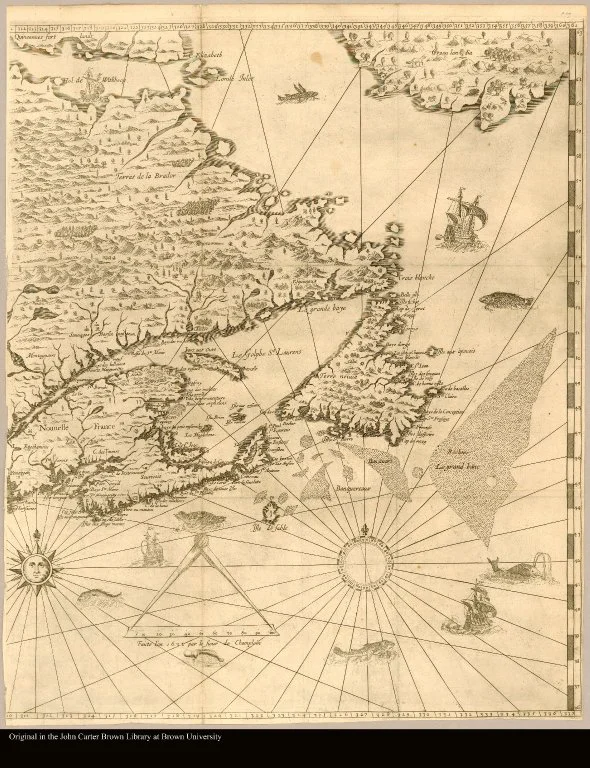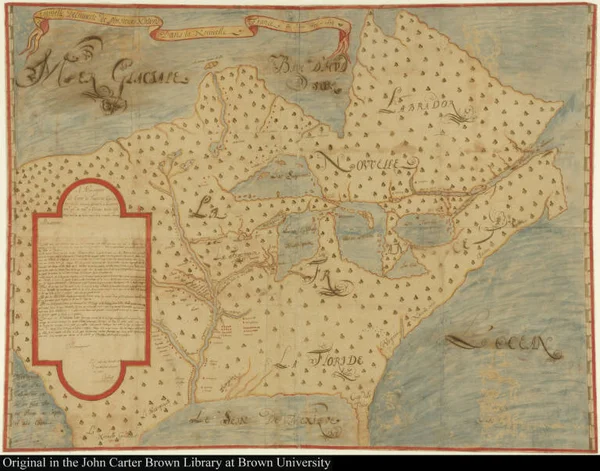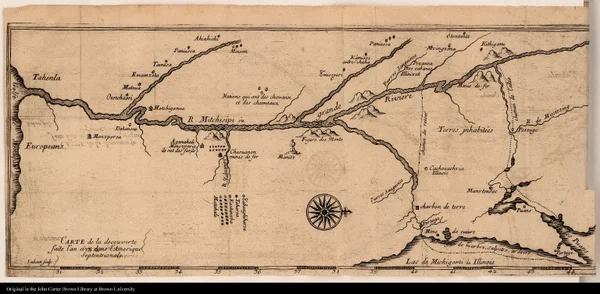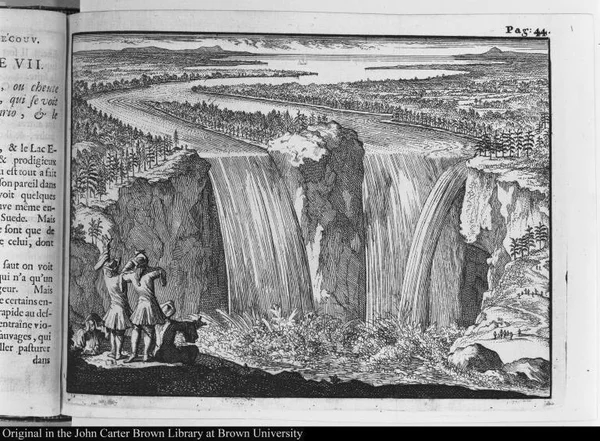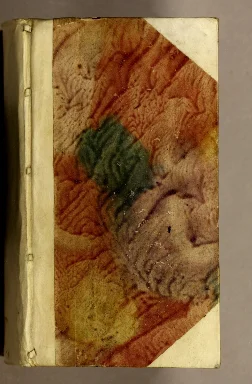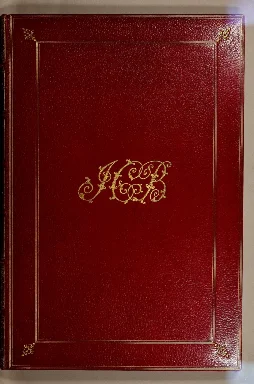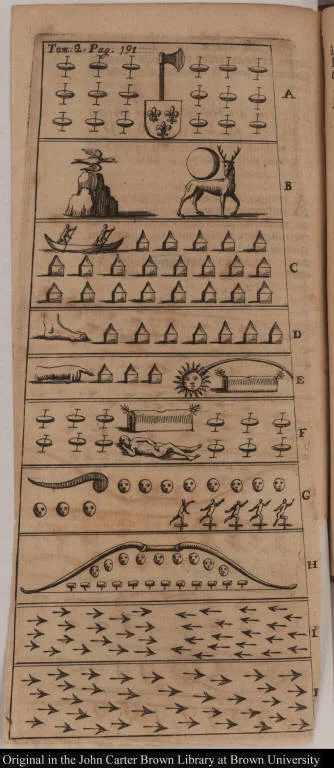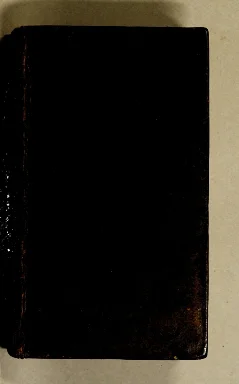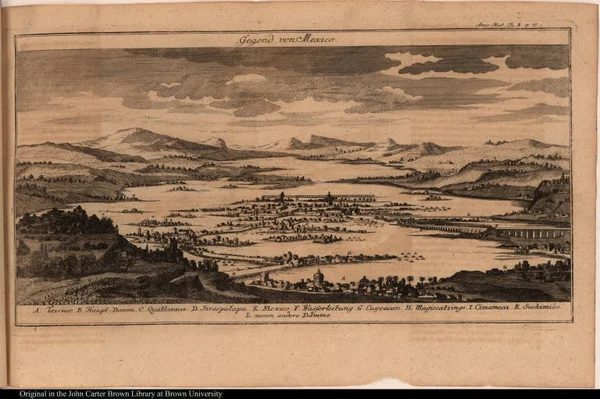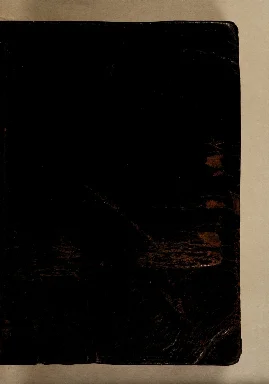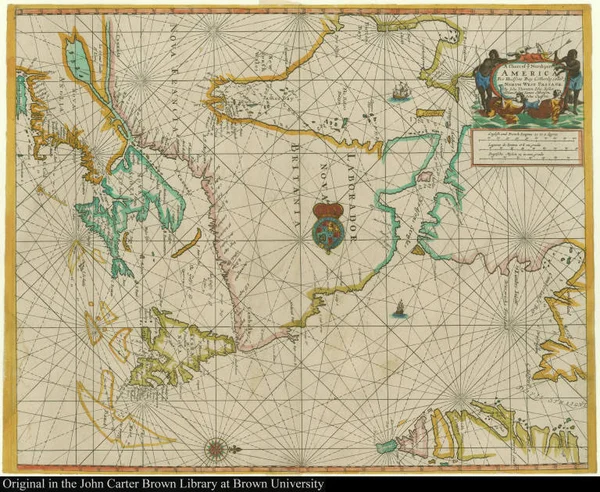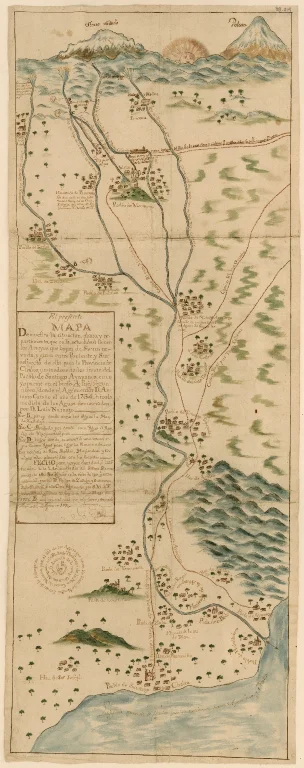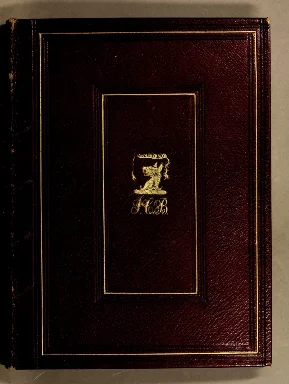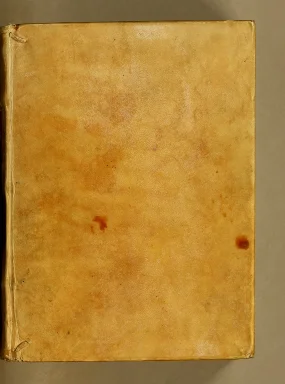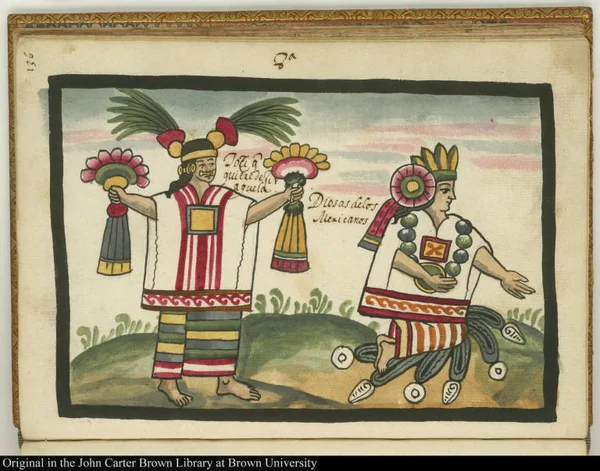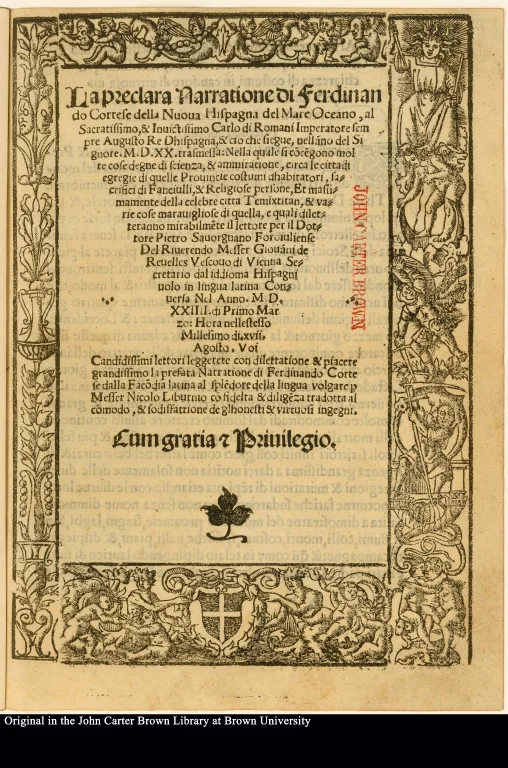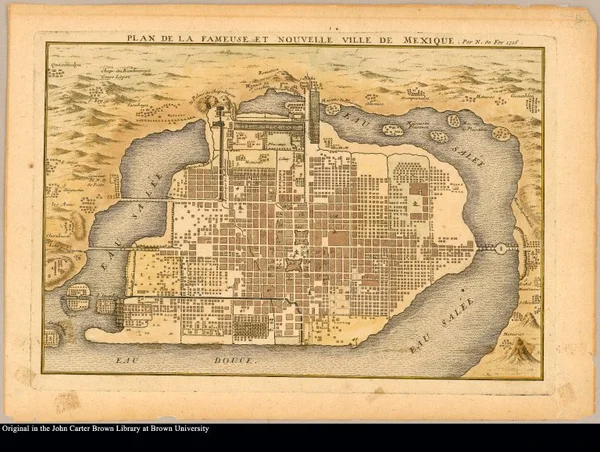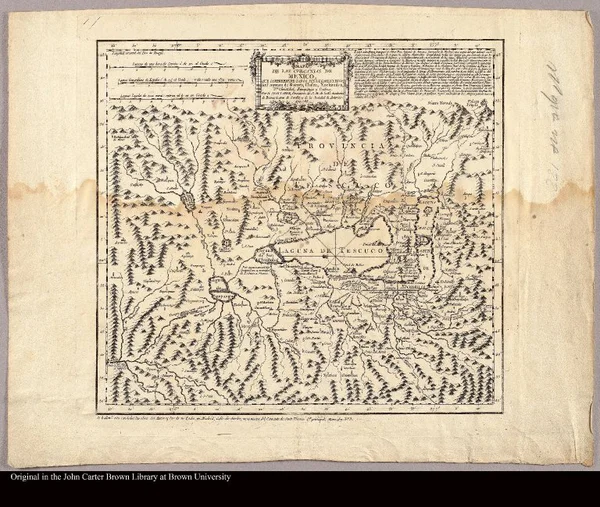French writers on American waters
Samuel de Champlain
[Carte de la Nouvelle-France, augmentée depuis la derniere, servant à la...
1632
Claude Le Beau e.a.
Geschichte des Herrn C. Le Beau, Advocat im Parlament. Oder Merckwürdig...
1752
Jacques Le Moyne de Morgues e.a.
Brevis narratio eorum quae in Florida Americae provi[n]cia Gallis acciderunt
1591-1609
Gegend von Mexico.
1751-1800
Thinking through aquatic activity
Controlling the waters of Tenochtitlan
[Title page]
1492-1600
Joseph Francisco de Cuevas Aguirre y Espinosa e.a.
Extracto de los autos de diligencias, y reconocimientos de los rios, lag...
1748
Credits
Project Creator(s)
- The John Carter Brown Library

